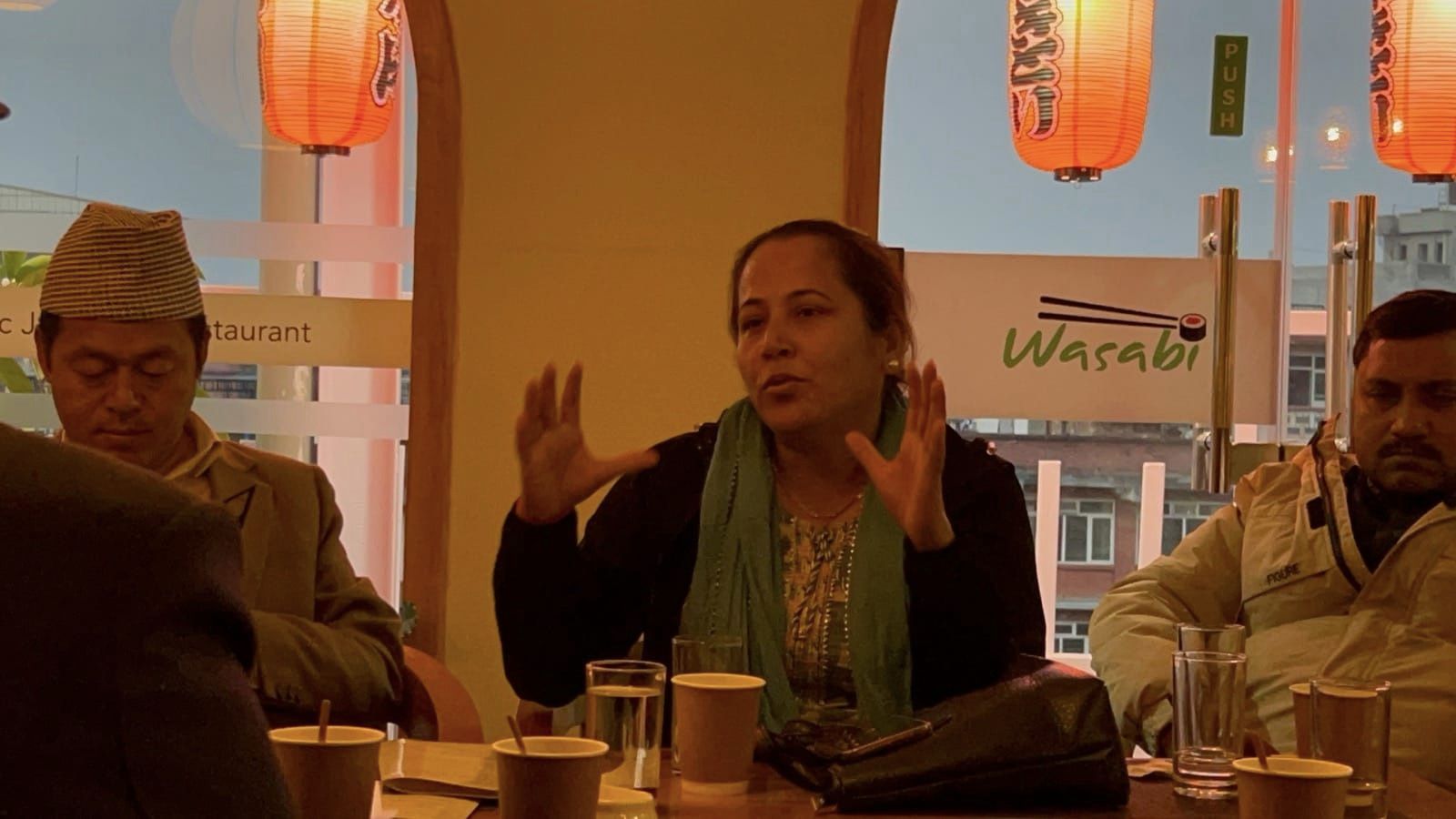On April 8, 2023, the National Disaster Management Network (DiMaNN) held a national meeting of DiMaNN members and an interaction program on the localization of disaster risk reduction (DRR). The event, which took place at Alpha House in Baneshwor, Kathmandu, brought together forty-seven DiMaNN members from across the country. The program aimed to share experiences, learnings, and perspectives on the effective implementation of DRRM at the local level, emphasizing coordination and collaboration with local government and other stakeholders.
Program Highlights:
The program was chaired by Mr. Surya Bahadur Thapa, Chairperson of DiMaNN, who welcomed all the members and emphasized the importance of DiMaNN and its role in policy advocacy, awareness, and capacity building for DRRM at the local level. Mr. Thapa highlighted the significance of localization and urged members to focus on its effective implementation for DRRM and sustainable development.
Dr. Raju Thapa, a DiMaNN Board member and Vice Chairperson of DPNet, delivered a presentation on the current status of disasters in Nepal. He emphasized the role of civil society organizations and their efforts to improve disaster risk reduction through localization. Dr. Thapa underscored the importance of incorporating local knowledge, technologies, and resources to reduce the impact of disasters.
Ms. Chetana Loksham from The Relief Trust (TRT) discussed the significance of mental health and psychosocial support (MHPSS) in DRRM. She highlighted the need to prioritize mental health in overall development and DRRM, emphasizing the high prevalence of mental health issues in Nepal. Ms. Loksham called for awareness, training, counseling, and policy development to address mental health in disaster contexts.
Mr. Daya Sagar Shrestha, Secretary of DiMaNN, emphasized the interlinkage between DRR and sustainable development. He explained how DRR and climate change align with the Sustainable Development Goals (SDGs) and urged network members to be aware of the DRR actions that contribute to specific SDGs. Mr. Shrestha also highlighted the opportunities available for DiMaNN within the National Platform for DRR (NPDRR), chaired by the Executive Director of the National Disaster Risk Reduction and Management Authority (NDRRMA).
Open Floor Discussion:
During the open floor discussion, participants highlighted several key points and issues. They expressed the fruitful nature of the national meeting, emphasizing the importance of networking, coordination, collaboration, and information sharing among member organizations. Capacity building, knowledge updates, and the review of laws and policies related to disaster, crisis, social justice, and human rights were considered essential.
The participants stressed the need to prioritize MHPSS and advocated for its inclusion in local development plans and budgets. They also discussed the integration of DRR in all development programs and emphasized the importance of awareness sessions, regular interactions, and sharing meetings to disseminate updates and information among DiMaNN members.
Conclusion:
The national meeting and interaction program organized by DiMaNN provided a platform for members to share experiences and insights on the localization of disaster risk reduction. The program emphasized the importance of coordination, collaboration, and partnership between various stakeholders at the local level. Localization, social inclusion, and sectoral integration were identified as crucial aspects of effective DRRM. The participants highlighted the need for capacity building, knowledge updates, and the review of relevant laws and policies to strengthen DRR efforts. Mental health and psychosocial support were identified as key areas that require prioritization in both development and disaster contexts. The discussions reinforced the importance of networking, coordination, and awareness sessions to enhance the collective efforts of DiMaNN and its members in promoting community resilience and sustainable development.


Leave A Comment